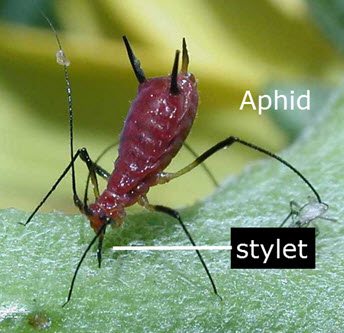Phloem and translocation
 A short activity introducing phloem sieve tubes and translocation using a video and a worksheet followed by a worksheet outlining some experiments to measure translocation direction and rates and some data analysis question.
A short activity introducing phloem sieve tubes and translocation using a video and a worksheet followed by a worksheet outlining some experiments to measure translocation direction and rates and some data analysis question.
Lesson Description
Guiding Questions
- If water travels from roots to leaves how can plants move sugars in the opposite direction?
- Which part of plant cells stops them from bursting even under high 'hydrostatic' pressure?
- Why do root hair cells and phloem cells in the leaves both use active transport?
- What does phloem sieve tube look like?
- How can osmosis be used to create a flow of contents in phloem sieve tubes
Activity 1: Phloem sieve tubes and translocation
Written to the student in a descriptive way.
![]() Phloem function video (2 minutes)
Phloem function video (2 minutes)
Complete annotations of the diagrams in the ![]() Phloem structure and function student sheet
Phloem structure and function student sheet
Activity 2: Experiment using aphids to analyse phloem contents.
Aphids (video introduction to aphids) have tiny tubular mouth parts called stylets which have been used to study the contents of phloem in different parts of plants. Some experiments have analysed honeydew from feeding aphids, other experiments anaesthetise the aphids and then cut off their stylets with a laser. The stylet remains in the plant and the phloem contents leak out through it.
It is not possible to use tiny syringes because the plant reacts and blocks them. Aphid saliva contains chemicals which stop this reactions, a bit like leech's saliva stops blood clotting.

The hypothesis of mass flow in the phloem relies on their being higher concentrations of sugar in the source an lower concentrations in the sink.
Look at the data from the following ![]() experiments on translocation in phloem and answer the questions on the worksheet.
experiments on translocation in phloem and answer the questions on the worksheet.
Teachers notes
Activity one could be used as a homework or in conjunction with some text book reading. It is also possible to cover these points with a teacher presentation. Model answers are available here Phloem structure and function - model answers
The main points required by the IB guide are that:
- plants transport sugars and other organic compounds from sources to sinks
- hydrostatic pressure gradients form in phloem vessels
- water in incompressible
- active transport loads sugars into phloem vessels at sources
- high sugar concentrations at sources leads to inward osmosis
- raised hydrostatic pressure (turgor pressure) at sources causes the phloem contents to flow towards the sinks
- in phloem the sucrose can flow upwards towards flowers as well as downwards to the roots.
Activity 2 contains two simple data analysis activities of simplified explanations of some quite complex phloem translocation experiments. The questions are also quite straightforward but will ensure that students have understood the use of radioactive labels and aphid stylets.
On this link there are some model answers to phloem translocation questions
This link give details of Bidulph and Cory's work on tranlocation direction
For a detailed review of Canny's experiment on translocation this google book is excellent

 IB Docs (2) Team
IB Docs (2) Team
